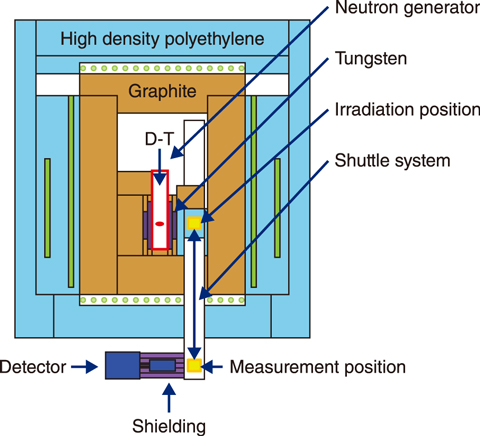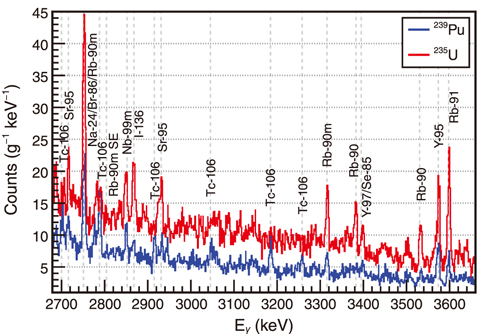
Fig.10-2 Schematic of PUNITA for delayed gamma-ray tests

Fig.10-3 235U and 239Pu fission product gamma-rays
ISCN has been developing delayed gamma-ray spectroscopy (DGS) to supplement present verification methods for nuclear material safeguards. DGS is useful for determining the fissile content in mixed-material samples for which current passive non-destructive assay (NDA) verification methods have challenges, like for spent nuclear fuel.
DGS is an active NDA technique wherein neutrons are used to induce fission in a sample. This generates fission products in proportion to the fissionable content, fission cross-section, and fission yield. The fission products subsequently emit unique sets of gamma rays as they decay with unique expected half-lives. These gamma rays are collected in a spectrum unique to the sample and interrogation procedure. The spectrum is subsequently deconvoluted to determine the fissionable nuclide ratios and, ideally, their mass.
However, since the long-lived fission products in spent fuel emit low-energy gamma rays at significant rates, shielding must be applied for reasonable verification times. As such, only high-energy gamma rays (above 2500 keV) can be used for evaluation and these must be emitted at significant rates to overcome the low-energy filter.
A DGS instrument requires an external neutron source and moderator for fission product creation and a gamma-ray detector to observe the spectrum over time. Ideally the sample is transferred between the neutron irradiation and measurement positions (see Fig.10-2). This interrogation cycle is repeated until statistically sufficient gamma-ray peaks are obtained.
ISCN conducted a joint experiment to demonstrate the safeguarding applicability of this technique using the Pulsed Neutron Interrogation Test Assembly (PUNITA), which is a non-destructive assay instrument that uses a D-T neutron generator at the Joint Research Center of the European Commission in Ispra, Italy. Preliminary experiments show clear distinctions between 235U and 239Pu that can be used to evaluate mixed-material samples (see Fig.10-3).
Future work will focus on optimizing the interrogation timing pattern and number of cycles to best evaluate the composition and associated mass. Additionally, the use of various neutron sources, neutron moderators, and neutron monitoring methods in compact instruments is being investigated.
This study was supported by the Ministry of Education, Culture, Sports, Science and Technology (MEXT), Japan.
(Tomoki Yamaguchi and Douglas Chase Rodriguez)
<Previous: 10 Development of Science & Technology for Nuclear Nonproliferation | Next: Colophon>